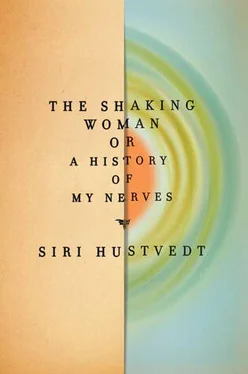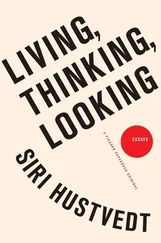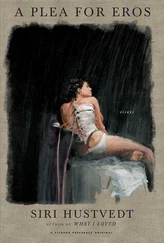A friend of mine told me a story about his wife. A Jewish girl who went to a Catholic high school, she was faced with a conundrum on the day of her graduation. After every young woman received her diploma, it was customary for her to kiss the ring of the priest who had handed her the official paper. J. decided to dispense with the ritual kiss on principle and later told the story of her small but significant act of nonconformity to her family and friends, with some pride. Years after the event, she happened to see a film of the graduation ceremony and was stunned to watch her younger self walk onto the stage, take her diploma, and bend over to kiss the priest’s ring. J.’s error was neither knowing nor deceitful. Rather, it was an unconscious reimagining of the moment, which served an important restorative purpose for her self-image. At some point in her history the memory had been reconsolidated. Surely, her wish that the story be exactly the opposite of what had actually happened was part of the transformation — a psychobiological process, through which the actual was replaced by the imaginary: a screen or, rather, a double, a “she” acting out J.’s desire. The phenomenon scientists call observer memory, when a person recalls the past not as an embodied first-person self but as a third-person other, may well be a similar form of this division, the creation of an imaginary mirror double who performs on the stage of memory. I have often wondered how many of my own reminiscences are distortions or the products of an imagination so vivid they have come to seem true.
A hundred years before neuroscientists understood reconsolidation, Freud wrote that the present colors the past, that memories are not always what they seem and cannot be relied upon as factual. Some memories may be screens for others. And most crucially, people revise their memories at a later date. He called this Nachträglichkeit ; the word is very hard to translate into English. James Strachey, Freud’s translator, called it “deferred action,” but it actually means something like “afterlyness.” 114An early memory takes on new meanings and changes as a person matures. The hippocampus is a part of the brain vital for episodic memory and has also been tied to aspects of spatial memory. 115It develops postnatally, which is a physiological explanation for infantile amnesia, the fact that our first years are lost in a fog. We have implicit memories from our earliest years, but not explicit ones, and it seems more than likely that for any experience to be recovered as a conscious memory, it once had to have been conscious. So people who claim to remember their births or powerful experiences that occurred in the first two years of their lives are more than likely in the grip of fantasies. My curiosity about the role language plays in building conscious memories has led me to quiz people about what they remember from their early childhoods. The results of my thoroughly unscientific survey are that without exception those who said they started talking at a very young age also have the earliest explicit recollections. This is true in my own family. My sister Asti, who was speaking in fluent sentences before the age of two, remembers far more from her third year of life than her three sisters.
There is now general agreement that memory is both shifting and creative. A study of people with bilateral hippocampal lesions found that the damage impaired not only their memories but their imaginations. The researchers asked the people in the study to imagine fictional places and events. When the subjects were prompted to conjure up a new experience — lying on a beach or walking through a museum exhibit — the brain-damaged patients’ descriptions were wan and impoverished, compared to the vivid, particular scenes produced by the “normal controls.” 116But even among so-called normal people, there is a wide range of imaginative differences.
When I read a novel, I see it, and later, I remember the images I invented for the book. Some of those images are borrowed from intimate places in my own life. Others, I suspect, are taken from movies or pictures in books or paintings I’ve seen. I need to put the characters somewhere. Many people I’ve spoken to confirm that they also see books. Once, however, I met a man on a panel with me, a poet and translator, who swore he did not invent images when he read. We were discussing Proust. “Well,” I asked him, “if you don’t see Marcel’s room and his mother and all of the people in the story, what happens?” He answered, “I see the words.” I was flabbergasted. It struck me as a sad way to read, but who knows? Perhaps his mind does not convert the symbols into pictures, and why would he feel the lack of something he has never known? When I write fiction, I see my characters moving around, speaking, and acting, and I always place them in actual rooms, houses, buildings, and streets I know and remember well. I am usually one of those characters, not I as I but I as someone else, an other self, male or female, projected into the mental world I inhabit as I write. Mostly, I don’t bother to describe the familiar interiors and exteriors in any detail, but I need them in order to do the work. My fictional events have to be grounded in the same way as the experiences I remember. I need loci . I don’t assume that all novelists work this way. Nevertheless, for many people, reading is a form of ordinary synesthesia. We turn abstract signs into visual scenes.
A young, gifted Mexican novelist, M., told me that while writing his first novel, he understood that he was making a house, room by room, and that when he finished, the house had been built. For him, the act of writing had precise visual coordinates. “I had the idea,” he wrote to me in an e-mail, “that this novel is like a white house, a funny one, that contains a second house, a dark and sinister one. In the center of the second house there is a garden, and in the garden there are brave dogs and a gardener who waits for the reader to arrive so he can tell him a story.” M. likes to get other novelists to draw a diagram or map of their novels, not unlike the little maps of narrative Laurence Sterne included in Tristram Shandy . When he asked me to do it for one of mine, I hesitated, but then the visual form arrived in my mind and I drew it quickly.
The faculty of memory cannot be separated from the imagination. They go hand in hand. To one degree or another, we all invent our personal pasts. And for most of us those pasts are built from emotionally colored memories. Affects give meaning to experience or value, as some philosophers put it. What we don’t care about we forget. Indeed, our amnesia for many things is a blessing. S. had a terrible time trying to expell visions in that overstuffed mind of his. He simply stored too much. My memory of the trip across the floor to console my cousin made its way into my autobiography through emotion, in this case an indignity visited upon the all-important “little personage,” me . Aristotle divided every memory into a likeness or visual image in the mind, simulacrum, and its emotional charge, intentio . The ancient philosopher understood that there was no memory without an accompanying affect. But when I search for a memory associated with speaking in public, I cannot find it. Am I frightened of something entirely hidden from me?
THE NEUROSCIENTIST Joseph LeDoux has done much of his research on fear and the circuits in the brain that are activated when a rat is repeatedly given an electric shock after hearing a tone. The animal quickly associates the tone with the shock, and once the connection is learned it will exhibit a fear response, freezing, when it hears the tone, even when the sound isn’t followed by a shock. The rat remembers that tone means shock. If enough time goes by, however, without the combination of tone and shock, the animal’s behavior may change, but the association between the neutral and the aversive stimuli will endure — possibly, LeDoux believes, for a lifetime. In this respect, human beings aren’t different from rats. We, too, can learn fear. Since my accident, I have had a lingering alarm about traveling by car, one I don’t have in planes or on boats. It is not rational. Being in one car crash does not predispose you to another, but the association of car with crash has been made, and it exhibits itself as a bodily tension, an anxiety that runs through me whenever I enter an automobile. At the same time, my fear has steadily diminished because I have managed to inhibit it by reasoning about my irrational fear, and I haven’t been in another collision.
Читать дальше












